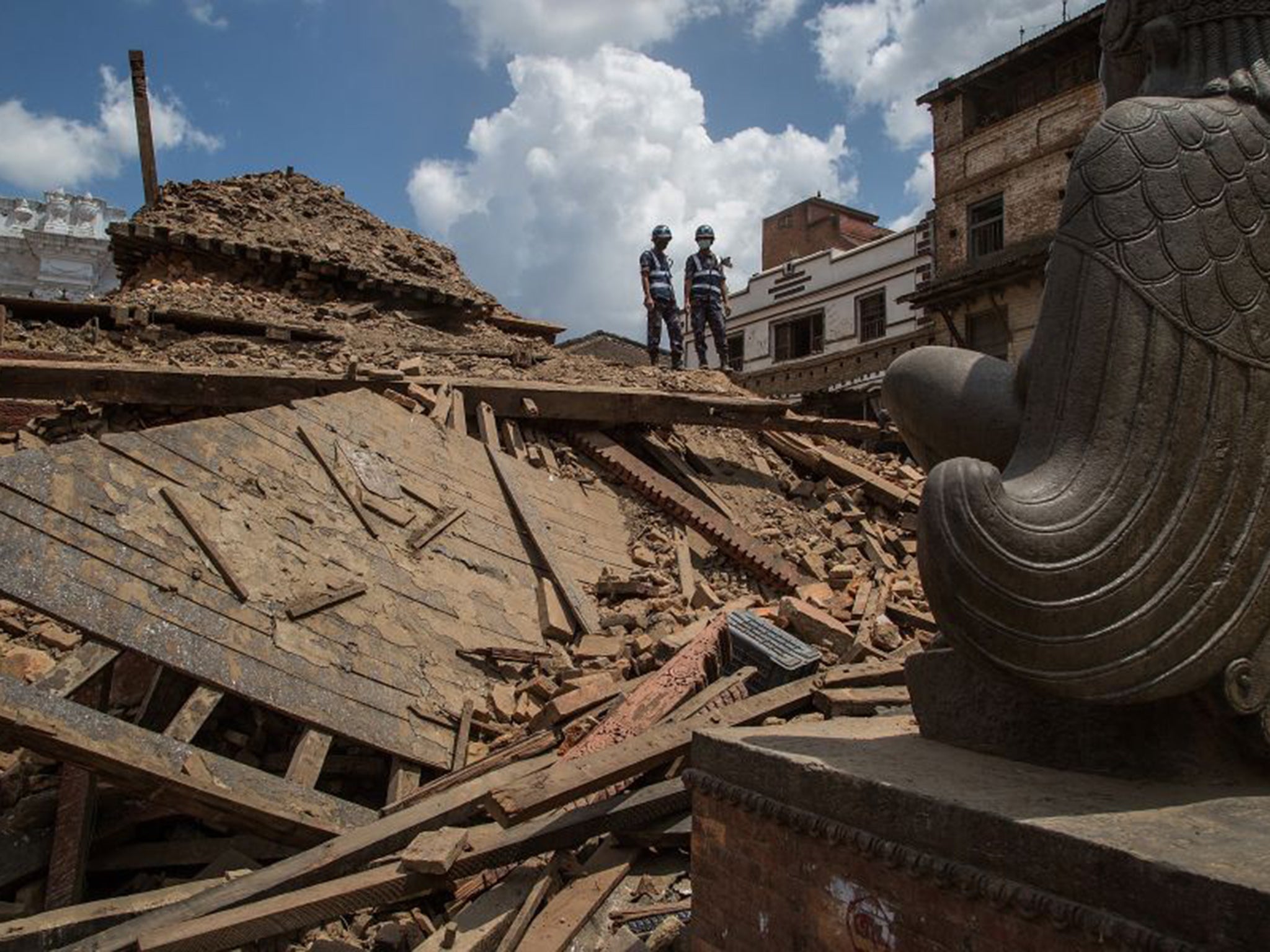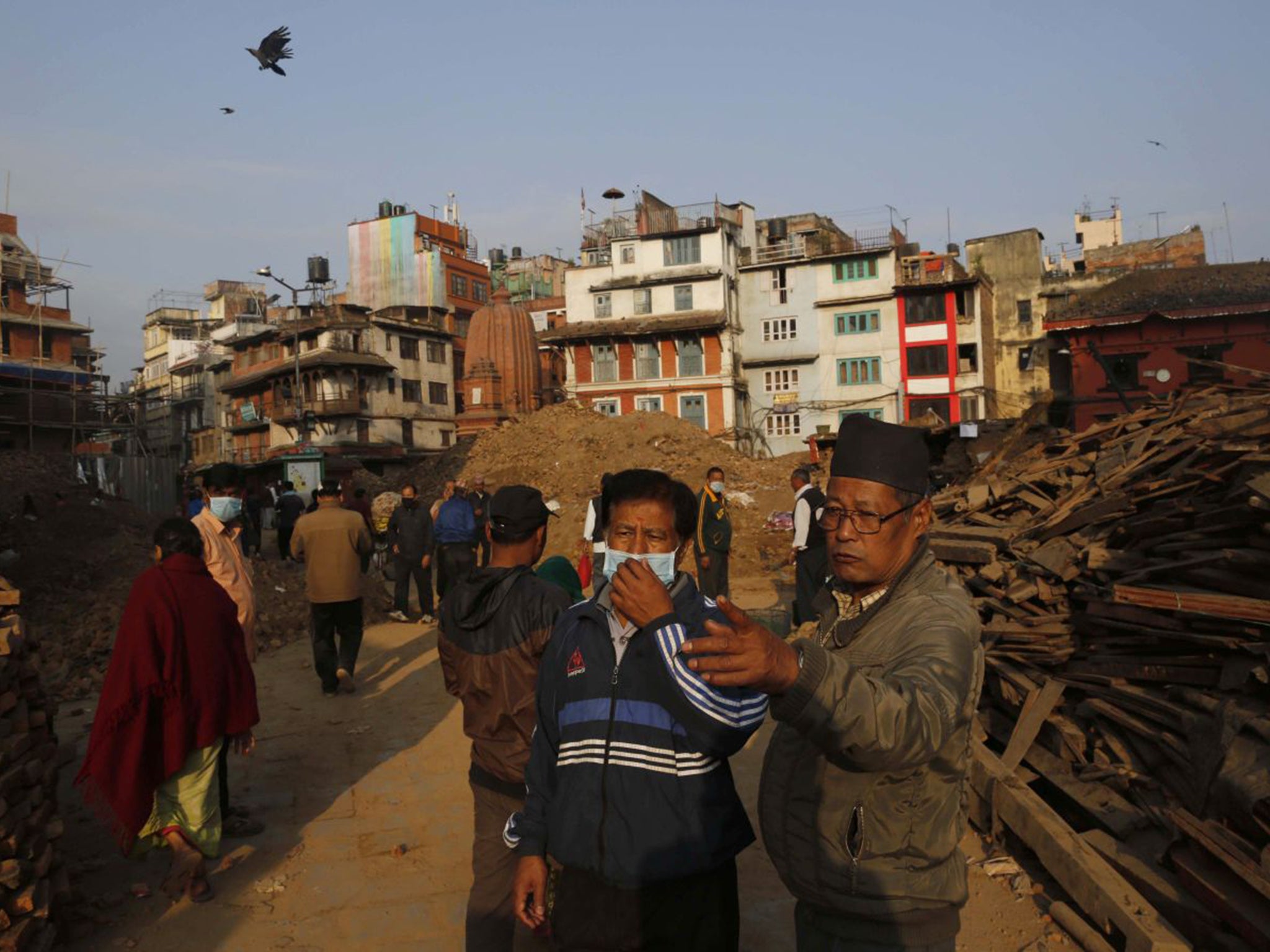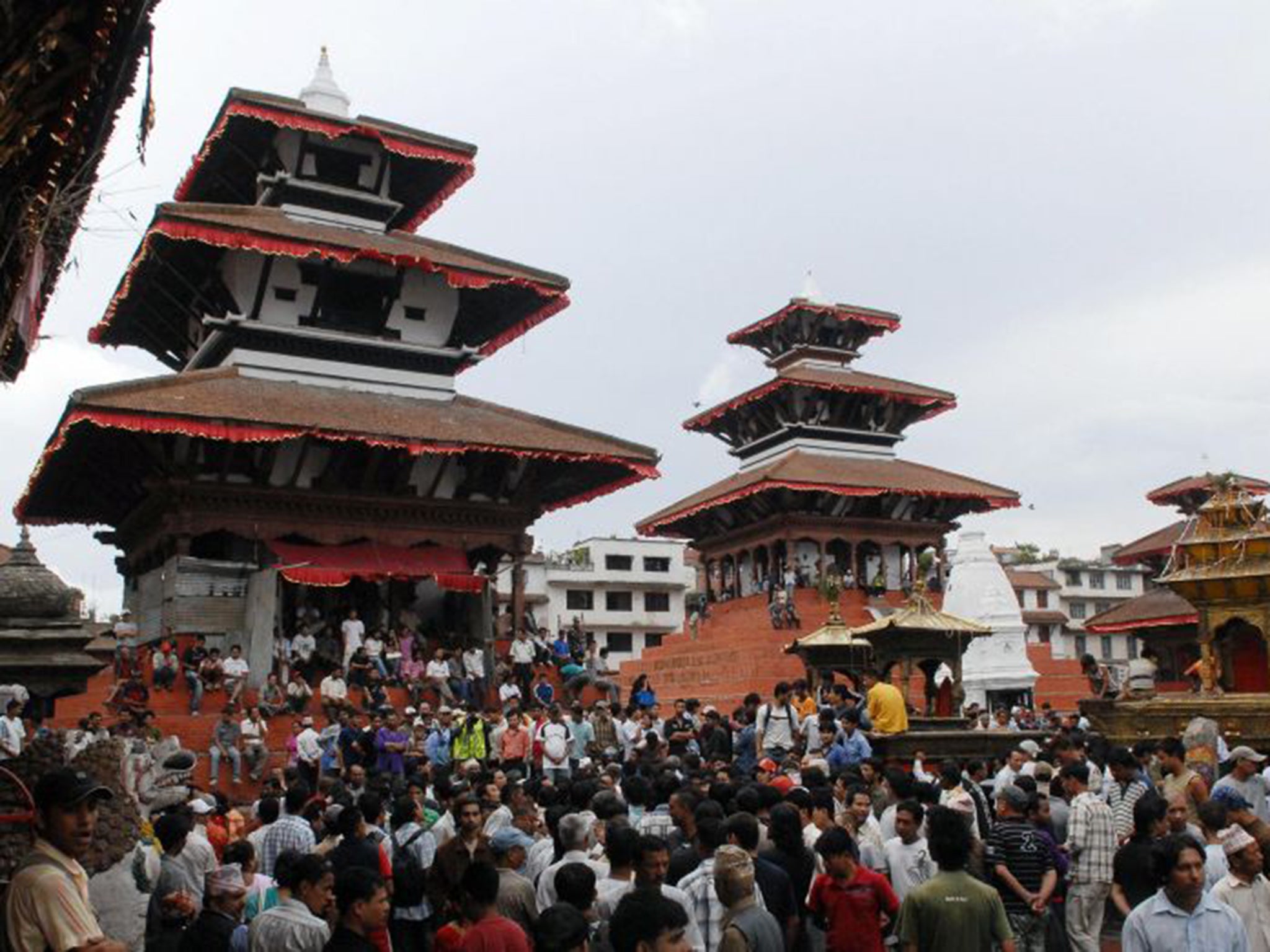Nepal earthquake: Many survivors receiving no help despite relief effort
Documents seen by The Independent on Sunday reveal severe tensions over demands that the Prime Minister’s office control the operation and its funding

A week after the earthquake struck Nepal there is intense frustration at the progress of the relief effort – both among a desperate public and among those trying to bring help.
In many badly affected areas – some just a few hours’ drive from the capital – survivors say they have received no help. Villagers have been reported besieging the few vehicles trying to deliver supplies.
Documents seen by The Independent on Sunday, describing meetings between international aid charities and senior government officials, reveal severe tensions, especially over demands that the Prime Minister’s office should control the operation and its funding.
The agencies appear not to trust the PM’s office to spend the money wisely or to run things smoothly. According to one NGO worker, the government appears to care only about “harvesting the golden wave” of relief aid. The death toll has climbed to more than 6,800, and the Home Ministry says hopes of finding more survivors are fading.
The agency documents also reveal frustration with bureaucracy at the airport where relief supplies are arriving, and suggest that local officials are obstructing relief efforts.
Nepal exempted tarpaulins and tents from import taxes on Friday, but the UN resident representative, Jamie McGoldrick, told Reuters that the government had to loosen customs restrictions further to deal with the rising flow of relief material.
Monitoring reports indicate that some supplies are being distributed according to recipients’ social status rather than their need. And planners say the scale of the disaster, and the nature of the help needed, is still not fully understood.
Apart from a few cars delivering supplies, little relief traffic could be seen on the road as the three Nepali businessmen I travelled with brought daal, blankets and almost a ton of rice to the stricken Sindhupalchowk district, a few hours’ drive from Kathmandu, on Friday. Ninety households received enough rice from our hand-out to last a couple of days. But in the village of Langarche a woman who had broken her leg in the earthquake – one of more than 14,000 injured – had still not been treated.

The people said that what they needed most was rice and, especially, tarpaulins. The high demand for tarpaulins means they are almost unavailable in Kathmandu, and the Finance Minister, Ram Sharan Mahat, has pleaded for the international community to send more of them. Mr Mahat has also claimed in an interview that, by Friday, “not a single dollar” of the sums pledged by international donors had been placed in government accounts, although that cannot be verified.
Lying by the road in the village was a pile of supplies under tarpaulins. These had been delivered by the government the previous evening. However, the officers at the small police station there had not been authorised to distribute them, so they lay untouched.
The international organisations prefer that the relief operation be co-ordinated by “clusters” they have created to manage different tasks, with foreign officials and the Nepali government working together. However, there are concerns over how these clusters are functioning. Few Nepalis are present at these meetings, which are mainly attended by foreigners with only a few days’ experience of the country.
Another foreign official described scenes of “bedlam” where the co-ordination effort is taking place. Many of the foreign relief organisations, newly arrived in the country, are still struggling to find vehicles or drivers. Meanwhile, the government is short of helicopters, and has called for more.
John Bevan, a former senior UN official with experience in Nepal, and also in Haiti after the earthquake there, put the situation in context. He said that, despite much talk of how well-prepared the government was to cope with an earthquake, almost nothing seemed to have been put in place for dealing with the current situation.

For example, while projections foresaw a catastrophe in densely populated Kathmandu, the actual disaster has unfolded in remote rural areas. Many of the worst-affected areas are in remote parts of the country, and there are not enough aircraft to reach the people who live there.
“It’s always going to be messy in the beginning,” said Mr Bevan. “An earthquake is bound to hit political decision-making. The military takes over as the only decision-making body. But decisions which are taken now have long-term social implications.”
More than 200 international relief organisations have flocked to Nepal. “It is tough to organise,” he said. “But if you are improvising it is impossible.”
Although urgent relief efforts have only just begun, experts say long-term plans must be made now to provide for the many thousands of displaced people.
Mr Bevan points out that many of the most needy people have by now moved far from areas where buildings have collapsed. Furthermore, the monsoon planting season is approaching. With no crops, harvest time will bring a fresh crisis.
Join our commenting forum
Join thought-provoking conversations, follow other Independent readers and see their replies
Comments